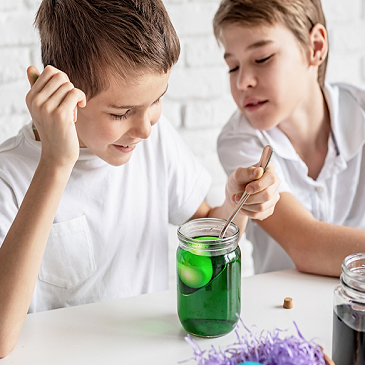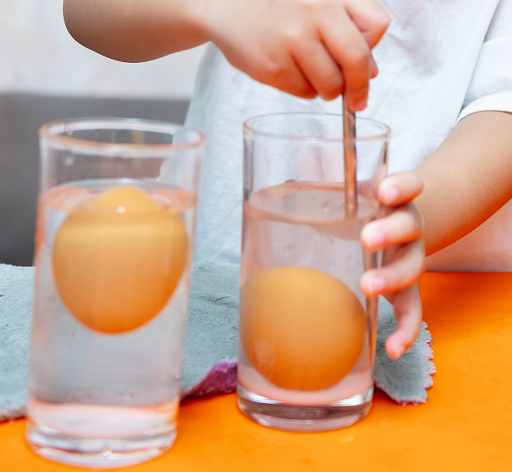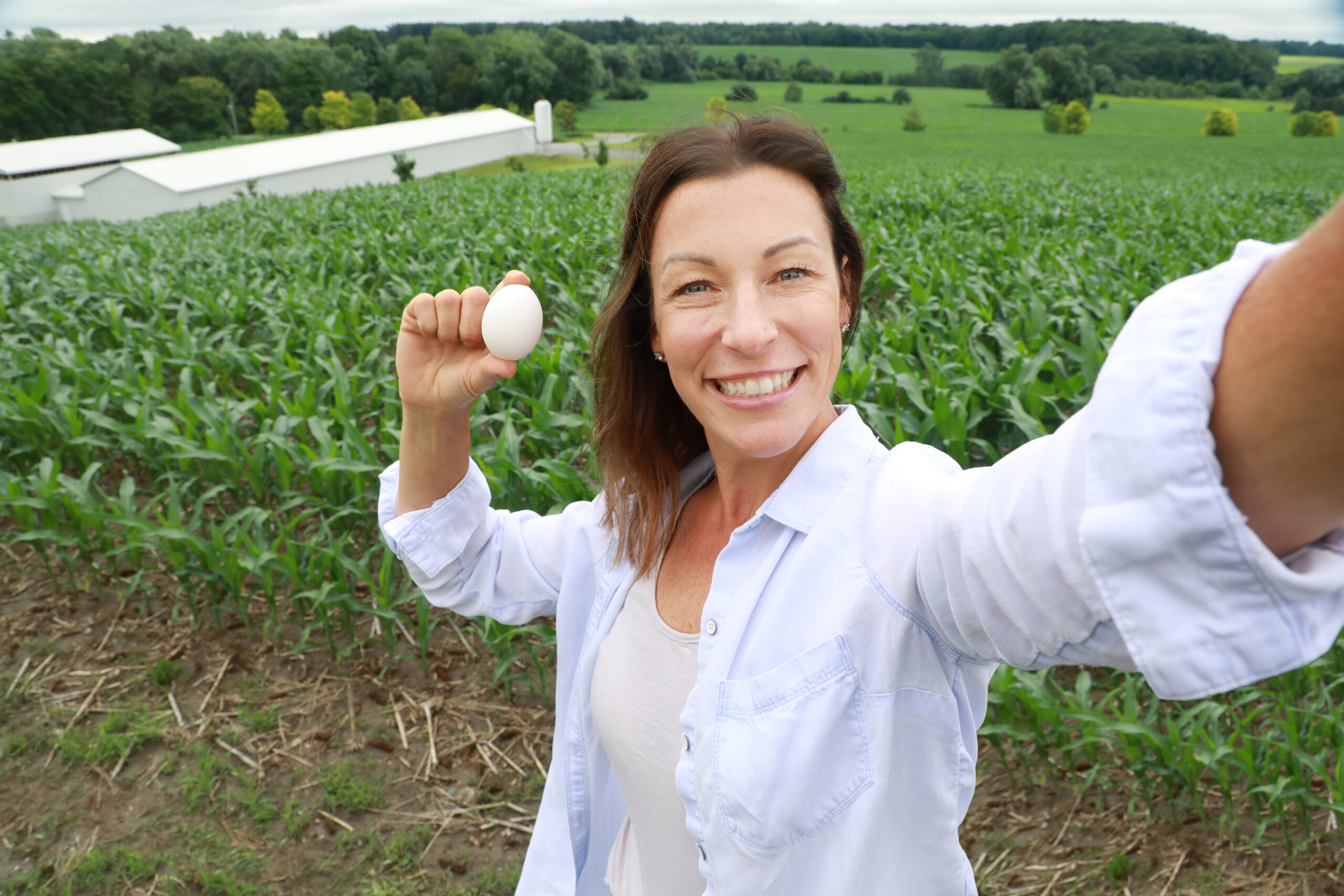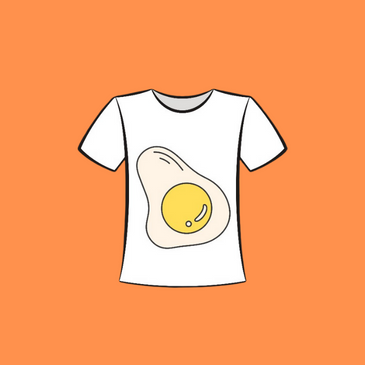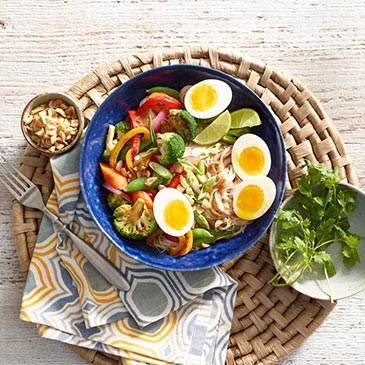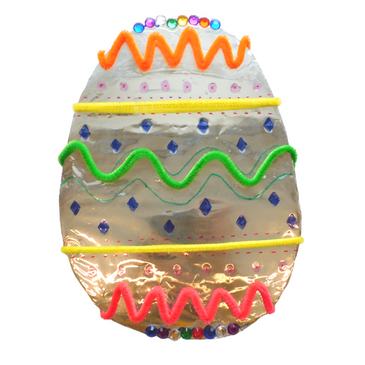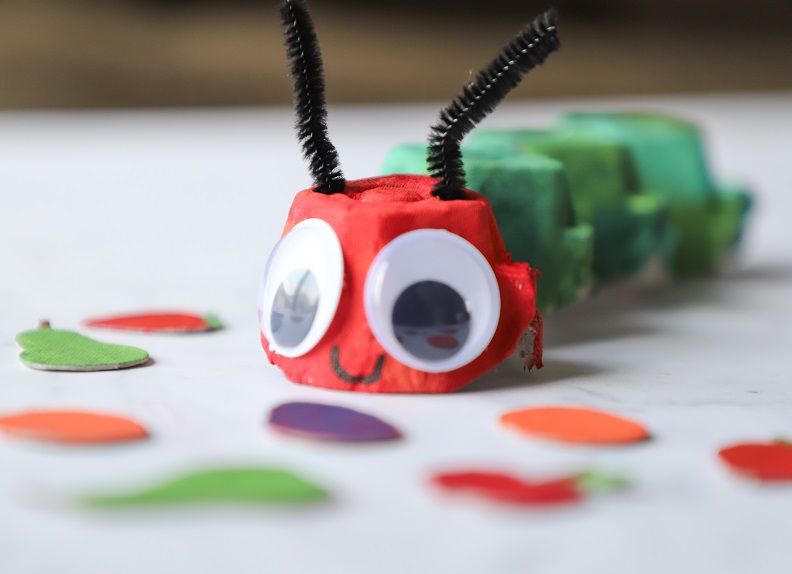How to:
- 1. Fill a glass with cola.
- 2. Place a raw egg into the glass.
- 3. Soak the egg in the glass filled with cola for 1 hour.
- 4. Check on the egg every 15 minutes. Have the children write down any observations they have about the egg. Encourage them to include as many sensory details as possible—what they see, smell, and imagine is happening to the egg.
- 5. After 1 hour, remove the egg from the soda.
- 6. What happened to the egg? What happens when you use a toothbrush and toothpaste and brush the egg? Are there any similarities between the egg and your teeth?
Result: The egg becomes stained with cola and can be cleaned using toothpaste, showing how brushing helps remove surface stains.
What’s Really Happening?
This simple science activity introduces kids to the concept of enamel erosion and the impact of sugary or acidic drinks on our teeth. The eggshell acts like a stand-in for tooth enamel—it’s porous and reacts similarly when exposed to dark, acidic liquids like cola. Over time, the egg absorbs the colour and becomes stained, just like teeth can. Brushing the egg helps demonstrate how proper oral hygiene can remove surface stains and keep teeth healthier.
Use this as a gateway into discussing dental health and habits. You can ask questions like:
- What happens if we don’t brush our teeth?
- How does what we eat or drink affect our teeth?
- Why do dentists recommend brushing twice a day?
This experiment is especially great after a classroom lesson or presentation about nutrition or health. It adds a tangible, hands-on component that reinforces what students have learned in a fun and memorable way.
Extension Ideas
🧪 1. Long-Term Observation:
Take the activity a step further by leaving the egg in the cola for 24 hours. Ask the students to form a hypothesis—what do they think will happen? Will the stain become darker? Will the shell start to weaken? This opens the door for critical thinking and allows students to practice the scientific method by predicting, observing, and reflecting.
📓 2. Comparison Test:
Have students try the experiment with different types of liquids: cola, juice, water, sports drinks, and milk. They can compare the effects of each liquid on a separate egg and chart their results in a table or science journal.
This introduces the idea that not all drinks affect our teeth the same way, and helps make connections to real-life choices.
🧼 3. Fluoride or No Fluoride?
Do a side-by-side test: brush one stained egg with toothpaste that contains fluoride, and another with fluoride-free toothpaste or just water. Which one removes more of the stain? This introduces the role fluoride plays in protecting teeth.
Cross-Curricular Connections
This activity easily integrates with literacy and health education. Students can write a short reflection, craft a poem about keeping teeth clean, or even design a poster encouraging good brushing habits. For older students, challenge them to research the pH levels of different drinks and create a presentation on how acidity affects tooth enamel.
You can also bring in a dental hygienist or show a short video to complement the hands-on experiment—making it a full interactive learning experience.
And for a creative classroom wrap-up, consider tying in a discussion about healthy foods and nutrition. You could even explore egg recipes as a fun way to talk about protein, balanced meals, and making nutritious choices that support not only dental health but overall wellness.
Whether used in the classroom or at home, this egg and soda experiment is a fantastic way to mix science with self-care habits. It’s simple, fun, and delivers a lasting message: what we eat and drink matters, and taking care of our teeth is worth smiling about! 😁
